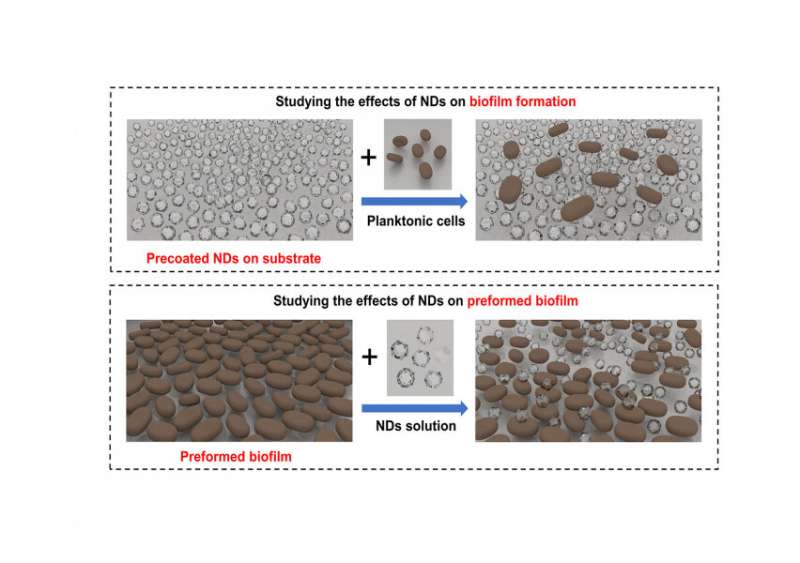
Diamonds are precious stones used for jewelry and industrial purposes. But in the not-too-distant future, diamond nanoparticles, or nanodiamonds (NDs), may contribute to oral health.
Oral diseases such as dental caries (decay), gum disease and fungal infections are major global health care problems, resulting in expenditure of millions of dollars every year. Complex microbial communities, typically occurring as disease-causing bacteria and fungi attach to teeth surfaces and form biofilm communities, are the main causes of infections. The National Institutes of Health states that 65 to 80 percent of all human infections are caused by biofilms.
In a journal article published in Biomaterials Science titled “Biofilm inhibition in oral pathogens by nanodiamonds,” scientists from the Faculty of Engineering and the Faculty of Dentistry of the University of Hong Kong (HKU) have revealed for the first time the inhibitory effect on oral pathogenic biofilms by high-pressure, high-temperature (HPHT) nanodiamonds.
Co-principal investigators of the study Dr. Chu Zhiqin, assistant professor of the Department of Electrical and Electronic Engineering, and Dr. Prasanna Neelakantan, clinical assistant professor in endodontics, report that NDs work as an effective agent against both free-floating cells (planktonic cells) and attached cells (biofilm) of bacteria and fungi that are highly relevant in oral and systemic infections. In particular, they uncovered the role of NDs in inhibiting biofilm formation and their disrupting effect on preformed biofilms in several selected orally and systemically important organisms.
Dental caries affect more than 3 billion people (48% of the population) worldwide. They are caused by a dominance of acid-producing bacteria that form biofilms on the surfaces of teeth. Streptococcus mutans (S. mutans), a Gram-positive bacterium, is considered pivotal for the onset of this disease. Periodontal (gum) disease, which is the sixth most prevalent disease in humans, with a global prevalence of 11.2%, is induced by Porphyromonas gingivalis (P. gingivalis), a Gram-negative bacterium. Notably, microbial dysbiosis in the oral cavity has been linked to systemic diseases such as obesity, Alzheimer’s and cardiovascular diseases. These microbials show high resistance to conventional antibiotics, and alternatives including nanotechnology are being intensively explored to provide more efficient therapeutics.
Moreover, fungal infections, another major oral disease with recognized clinical significance, have seen no advancement in the development of therapeutic drugs over the past several decades.
“Nano-materials are the hot topic in current materials science as these ultra-small particles can effectively penetrate into microorganisms and can also be used to carry a wide variety of drugs. Our research showed that these ultra-small nanodiamonds can manipulate genetic mechanisms in the pathogens and prevent their attachment to any surface, hence inhibiting biofilm formation in the oral cavity,” explained Dr. Chu and Dr. Neelakantan.
“The results of this exciting study demonstrated the great potential of NDs as an alternative therapeutic platform to prevent and treat oral infections. NDs possess many promising features including excellent biocompatibility and flexible surface properties. They are also proven to be very safe for humans. Our work will promote a better mechanistic understanding of NDs on oral pathogens, paving the way for their clinical and translational applications,” they added.
Source: Read Full Article
